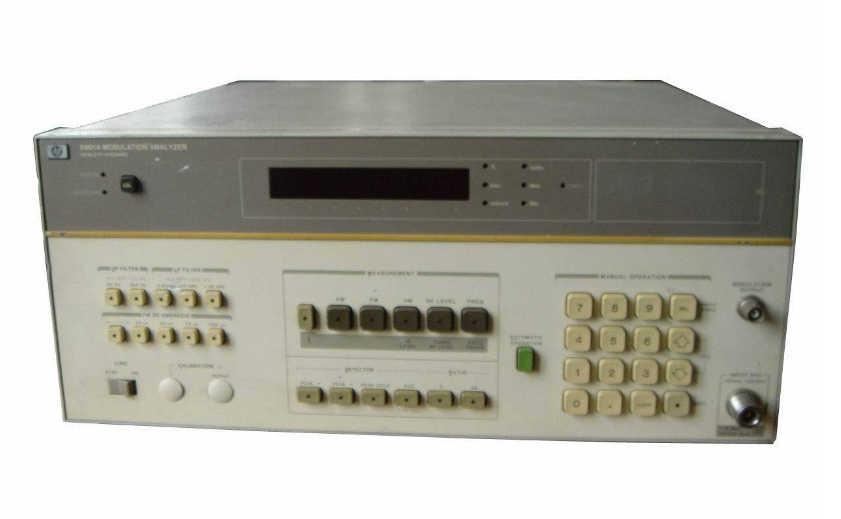
調(diào)制度分析儀是一種用于分析調(diào)制信號(hào)的特性和參數(shù)的儀器,主要用于通信系統(tǒng)、廣播系統(tǒng)等領(lǐng)域。以下是調(diào)制度分析儀的基本原理、作用和使用方法:
原理:
- 信號(hào)采集:將待測(cè)調(diào)制信號(hào)輸入調(diào)制度分析儀。
- 信號(hào)處理:對(duì)輸入信號(hào)進(jìn)行解調(diào)或數(shù)字處理,提取調(diào)制信號(hào)的特征參數(shù)。
- 參數(shù)分析:分析提取的特征參數(shù),如調(diào)制度、調(diào)制頻率、調(diào)制深度等。
作用:
- 調(diào)制度分析:用于分析調(diào)制信號(hào)的調(diào)制度,即調(diào)制信號(hào)對(duì)載波的影響程度。
- 信號(hào)分析:用于分析調(diào)制信號(hào)的頻譜特性、帶寬、功率等參數(shù)。
使用方法:
- 信號(hào)輸入:將待測(cè)調(diào)制信號(hào)正確連接到調(diào)制度分析儀的輸入端口。
- 儀器設(shè)置:設(shè)置分析儀的工作參數(shù),如調(diào)制度范圍、分辨率等。
- 信號(hào)分析:?jiǎn)?dòng)調(diào)制度分析儀,進(jìn)行信號(hào)采集和分析。
- 數(shù)據(jù)處理:根據(jù)采集到的數(shù)據(jù),進(jìn)行調(diào)制度分析和參數(shù)測(cè)量。
- 結(jié)果展示:將分析結(jié)果以圖形或數(shù)字形式展示,如調(diào)制度圖、頻譜圖等。
使用調(diào)制度分析儀需要一定的信號(hào)處理和儀器操作知識(shí),操作時(shí)需注意選擇合適的參數(shù)設(shè)置和分析方法,以確保獲得準(zhǔn)確的分析結(jié)果。
The modulation analyzer is a device used to analyze the characteristics and parameters of modulated signals, mainly in communication systems and broadcast systems. Here's an overview of its principles, functions, and usage:
Principles:
- Signal Acquisition: The modulation analyzer receives the modulated signal to be analyzed.
- Signal Processing: The input signal is demodulated or processed digitally to extract its characteristic parameters.
- Parameter Analysis: The extracted parameters, such as modulation index, modulation frequency, and depth, are analyzed.
Functions:
- Modulation Analysis: It analyzes the modulation index of the modulated signal, which indicates the extent to which the modulation affects the carrier.
- Signal Analysis: It can also analyze the spectral characteristics, bandwidth, and power of the modulated signal.
Usage:
- Signal Input: Connect the modulated signal to be analyzed to the input port of the modulation analyzer.
- Instrument Setup: Set the parameters of the analyzer, such as the modulation index range and resolution.
- Signal Analysis: Start the modulation analyzer to collect and analyze the signal.
- Data Processing: Analyze the collected data to determine the modulation index and other parameters.
- Results Display: Display the analysis results graphically or numerically, such as modulation index plots or spectral plots.
Using a modulation analyzer requires some knowledge of signal processing and instrument operation. Care should be taken to selec appropriate parameters and analysis methods to ensure accurate results.














評(píng)論0